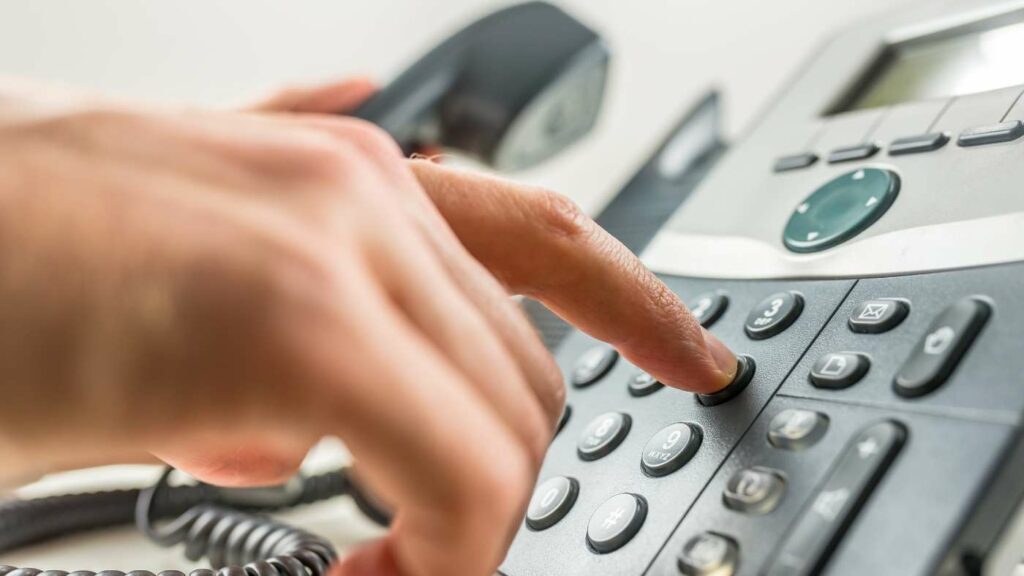Have you ever been frustrated by choppy audio during an important call? VoIP, or Voice over Internet Protocol, has revolutionised how we communicate. However, the nuances of its call quality can make or break customer experiences.
To comprehend VoIP, think of it as the technology that allows voice to travel over the internet instead of traditional phone lines. This shift to digital communication has significant implications for customer satisfaction. High-quality calls can lead to happy customers, while poor quality can drive them away.
Let’s explore the intricate world of Call Quality VoIP, the technical and human elements that combine to create clear and reliable communication.
We’ll dissect the factors that affect call quality, the critical role of quality assurance, and the strategies for resolving VoIP issues—all vital for maintaining stellar customer service in a digital age.
How Does Call Quality Affect the Customer Experience?
Call quality is a crucial aspect of customer service that touches the core of customer experiences. When a customer reaches out over the phone, the clarity and reliability of the conversation can significantly influence their perception of the service provided. Quality issues such as static, echo, or interruptions can not only cause frustration but also lead to miscommunication, potentially resulting in customer issues not being resolved satisfactorily. Each interaction is a representation of the company’s commitment to excellent customer service, and clear, uninterrupted calls signal respect and value towards the customer’s time and patronage. Remember, the first impression is often lasting, and call quality can set the tone for ongoing customer interaction.

Understanding the Importance of Call Quality in Customer Satisfaction
Quality assurance teams are in place to ensure that each call meets a certain standard of audio quality. The Customer Satisfaction Score (CSS) is often directly linked to the quality of agent interactions. Poor call quality can lead to misunderstandings and an increased need for repeat calls, which taxes the patience of customers and the efficiency of customer service teams. In contrast, high-quality calls support effective communication, accurately comprehending customer issues, and providing appropriate solutions, ultimately raising customer satisfaction. Training purposes also benefit from recording and reviewing high-quality calls, enabling customer service representatives to learn and improve from real-life examples.
For management and quality assurance purposes, here’s a simple table exemplifying key elements that impact customer satisfaction about call quality:
| Element | Impact on Customer Satisfaction |
|---|---|
| Audio Clarity | Enhances understanding and resolution of customer issues |
| Minimal Interruptions | Reduces customer frustration and repeats contact |
| Low Packet Loss | Improves conversation flow and efficiency |
| Good Internet Connection | Ensures call stability and reliability |
The Impact of Call Quality on Customer Loyalty
The experience a customer has with a company through phone calls can significantly affect their loyalty. Excellent call quality can lead to exceptional customer experiences, embedding a sense of trust and reliability that promotes customer loyalty. Consistent positive experiences contribute to favourable customer sentiment, extending business lifetime value. On the other hand, frequent encounters with poor call quality may push customers to consider competitors who can offer a more reliable communication line. Centre quality assurance should, therefore, target not just the resolution of quality issues but also preemptively secure the infrastructure and training that preempt these issues, thereby safeguarding customer loyalty. Quality assurance processes that focus on consistently high call quality reinforce that a company values its customer’s comfort and time, encouraging customer service reps to uphold high communication standards, naturally resulting in a stronger bond with the customer base.
Factors Affecting Call Quality in VoIP
Call quality is the backbone of Voice over Internet Protocol (VoIP) communications, where clear and uninterrupted calls are paramount. Several factors influence the quality of VoIP calls, extending beyond mere voice clarity to include elements like the VoIP service provider’s infrastructure, the devices used for communication, network configurations, and even environmental noises. These factors can broadly be categorised into aspects that affect the digital signal, such as packet loss, jitter, and latency, and those that pertain to the quality of hardware used, like microphones and speakers. All these contribute to either a seamless conversation that feels as natural as a face-to-face interaction or a frustrating exchange that could harm customer relationships.
Internet Connection and Packet Loss
The stability of the internet connection is fundamental to VoIP call quality. A robust and reliable connection prevents the loss of data packets, which is essential for delivering clear audio. Packet loss occurs when data packets travelling across the network fail to reach their destination, causing gaps in the audio stream. This can result in voices sounding robotic or calls dropping altogether. Moreover, a strong internet connection with ample bandwidth can handle the high volume of data transmission required for high-quality VoIP calls. An inadequate internet connection increases the likelihood of packet loss and can cause jitter and latency, further degrading call quality.
| Network Issue | Effect on VoIP Call Quality |
|---|---|
| High Packet Loss | Causes gaps and dropouts in the conversation |
| Jitter | Produces garbled or out-of-order audio |
| Low Bandwidth | Results in overall poor call quality |
| Latency | Leads to delays in voice transmission |
Audio Quality and Clarity
At the heart of call quality lies audio clarity. Clear audio ensures that both parties can understand each other without strain or asking for repetition. Various technical aspects contribute to audio quality in VoIP calls, including codecs used for compressing and decompressing the voice data, the sampling rate, which affects how natural the sound is, and even the acoustic properties of the physical space from which the call is made. Each variable must be optimised to ensure the transferred audio is crisp and free of distortions that could hinder effective communication. Achieving optimum audio quality and clarity involves advanced technologies and appropriate settings that maintain the integrity of the voice data from end to end.
Role of Individual Agents in Ensuring Call Quality
While technology plays a significant role, individual agents are equally instrumental in ensuring high call quality. Agents are responsible for effectively utilising their tools, including hardware like headsets and microphones and software such as voice enhancement apps. Proper training is crucial for agents to understand the nuances of managing calls and troubleshooting minor tech issues on the spot. Moreover, their articulation, tone, and ability to control the pace of their speech can significantly influence call quality. Conscious efforts by agents to speak clearly and listen attentively amplify the positive impact on customer satisfaction.
Agents are tasked with creating a professional environment free of background noise and interruptions, which contributes to overall call quality. Regular feedback and quality assurance audits can help agents maintain high standards and address performance-related quality issues.
| Agent Responsibility | Effect on Call Quality |
|---|---|
| Effective Tool Usage | Reduces technical issues during calls |
| Clear Articulation | Enhances understanding and minimises the need for repetition |
| Noise Management | Ensures a professional audio environment |
In conclusion, VoIP call quality depends on a confluence of technical and human elements. From robust Internet connections that minimise packet loss to the personalised touch of a well-trained agent, each facet contributes significantly to the overall customer service experience.
The Role of Quality Assurance in Call Quality Monitoring
Quality Assurance (QA) teams are pivotal in maintaining exemplary call quality, synonymous with efficient customer service. Equipped with a systematic approach, the QA team monitors call quality rigorously, identifying ways to enhance the performance of customer service representatives. They also keep track of recurring quality issues that can be addressed through tailored training programs and technology upgrades. With specialised tools at their disposal, QA teams can record, evaluate, and analyse customer-agent interactions, ensuring that the agents are meeting the quality standards that the centre has set.

By establishing strong QA processes, organisations integrate a culture of continuous improvement. These processes often involve consistent monitoring and reviewing of calls to spot potential areas for refinement. Findings from these reviews lead to actionable insights, which are critical to the quality assurance process.
The Relationship Between Quality Assurance and Customer Satisfaction
The bond between QA and customer satisfaction is indisputable. A robust QA framework is instrumental in delivering service that meets or exceeds customer expectations. It acts as a bridge between the ideal customer service vision and the reality of agent performances. By continuously analysing and iterating on the quality of agent interactions, QA ensures that even upset customers have their issues resolved satisfactorily.
Moreover, the data gathered by the QA team allows customer service managers to make informed decisions regarding training purposes, resource allocation, and strategic planning. The goal is always to provide excellent customer service across all fronts, turning positive interactions into repeat business and long-term loyalty. As such, QA is a cornerstone in building and maintaining exceptional customer relationships, directly impacting and boosting customer satisfaction levels.
| QA Focus Area | Contribution to Customer Satisfaction |
|---|---|
| Adherence to Communication Standards | Increases the likelihood of first-call resolution |
| Feedback and Improvement | Enhances the quality of future interactions |
| Training and Development | Equips agents with the skills to handle complex customer issues |
| Technology Optimisation | Allows for greater efficiency and more personalised service |
Addressing and Resolving Quality Issues in VoIP Calls
Voice over Internet Protocol (VoIP) has become a critical tool for customer service representatives to interact with clients efficiently. However, this technology is not without its challenges. To maintain high customer service standards and minimize disruption, addressing and resolving common VoIP quality issues such as packet loss, jitter, and inadequate Internet connections is essential. These technical issues can lead to poor call quality, directly affecting customer experiences. Effective VoIP infrastructure management is crucial to ensure seamless communication and high-quality customer interactions.
Quality assurance teams typically work alongside IT specialists to pinpoint and rectify these issues. For instance, upgrading network infrastructure, optimising bandwidth allocation, and ensuring robust Internet connections are preliminary measures for mitigating VoIP problems. Additionally, regularly updating VoIP software to the latest versions and utilising dedicated VoIP hardware can significantly improve call quality. Proactively monitoring VoIP metrics and network performance enables issues to be identified and addressed before they impact customer service.

Common Quality Issues in VoIP Calls
The primary quality issues often encountered with VoIP calls include:
- Latency: Delays in voice data transmission can cause conversations to sound out-of-sync.
- Jitter: Variations in packet arrival times can lead to garbled or scrambled audio, which is frustrating for agents and customers.
- Packet Loss: Missing packets of data may cause gaps in voice communication and lead to misunderstandings or requests for information to be repeated.
- Bandwidth Insufficiency: An overcrowded network and insufficient bandwidth can degrade call quality, causing interruptions or dropped calls.
- Poor Audio Quality: Low-quality hardware or incorrect audio settings can result in unclear voice transmission.
Organisations can address these issues and ensure consistent call quality by implementing systematic monitoring and adopting advanced VoIP technologies.
The Customer Service Team’s Responsibility in Handling Quality Issues
The customer service team bears significant responsibility for managing quality issues during calls. Service reps should be trained to recognize and report specific quality problems, assisting the IT and QA teams to diagnose and resolve them swiftly. Here are key responsibilities:
- Quick Identification: Recognize and document any anomalies in call quality.
- Dialogue Maintenance: Attempt to maintain a productive conversation and manage customer expectations during a subpar VoIP call.
- Problem Escalation: Notify technical support teams immediately when persistent or critical quality issues occur.
- Customer Reassurance: Communicate clearly and reassure customers that their issues are being taken seriously and that steps are being taken to resolve quality concerns.
Incorporating unified communications strategies within the customer service framework can further enhance the team’s ability to manage and resolve VoIP quality issues efficiently. Unified communications streamline various communication channels and tools, providing a more cohesive and responsive approach to handling customer interactions and technical problems.
Training Agents to Address Quality Issues
Comprehensive training is crucial for a customer service team to manage VoIP quality issues effectively. Agents should be familiar with:
- Troubleshooting Basics: Understanding basic troubleshooting steps such as checking headset connections or switching to a backup communication channel.
- Quality Issue Documentation: Documenting the occurrence of issues accurately to aid in systematic problem-solving and reporting to the quality assurance team.
- Soft Skills: Using empathy and patience when communicating with customers about call quality concerns.
Training modules might include:
| Training Module | Objective | Description |
|---|---|---|
| Technical Know-How | Equip agents with a foundational understanding of VoIP technology. | Cover the basics of VoIP operations and common quality issues. |
| Reporting Protocols | Streamline the process of reporting issues. | Instruct on how to use internal tools and forms for quick reporting. |
| Communication Strategies | Maintain customer satisfaction while addressing call problems. | Role-play scenarios with poor call quality to practice maintaining professionalism and calm. |
By addressing quality issues with appropriate training and technical solutions, customer service teams can ensure that their interactions remain clear, professional, and conducive to cultivating positive customer relations.
Techniques to Improve Audio Quality in VoIP Calls

Improving audio quality in VoIP calls is essential to achieving excellent customer service. Here are some techniques:
Upgrade Audio Equipment: Use high-quality headsets to ensure clarity and noise reduction.
Adjust Codec Settings: Choose the right codec that balances bandwidth use with sound quality.
Network Optimisation: Prioritise voice traffic on the network to prevent delays or jitters.
Regular Software Updates: Keep VoIP applications updated for the latest audio compression and enhancement improvements.
| Improvement Technique | Benefit |
|---|---|
| High-Quality Headsets | Reduces background noise, enhances voice clarity |
| Codec Optimisation | Balances quality with bandwidth efficiency |
| Traffic Prioritisation | Reduces latency and jitter |
| Software Updates | Resolves known audio issues, adds new features |
Organisations can provide crystal-clear conversations by adopting these strategies, even in bandwidth-constrained environments.
Frequently Asked Questions
How Does Call Quality Affect the Customer Experience?
Call quality is crucial for customer service as it significantly impacts customer experiences. Clear, reliable calls ensure customers can communicate their needs effectively, reducing frustration and miscommunication. Poor call quality, such as static, echo, or interruptions, can lead to unresolved issues and negative perceptions of the service. High-quality calls demonstrate respect for the customer’s time and contribute to a positive first impression and ongoing customer satisfaction.
Factors Affecting Call Quality in VoIP
Several factors influence the quality of VoIP calls, including:
Internet Connection: A stable, high-speed internet connection is essential to prevent packet loss and maintain clear audio.
Packet Loss: Missing data packets cause gaps in the audio stream, making voices sound robotic or causing calls to drop.
Jitter: Variations in packet arrival times can result in garbled audio.
Latency: Delays in voice data transmission can make conversations feel out-of-sync.
Bandwidth: Sufficient bandwidth is necessary to handle the data transmission required for high-quality VoIP calls.
The Role of Quality Assurance in Call Quality Monitoring
Quality Assurance (QA) teams are essential in maintaining high call quality. They monitor calls to ensure they meet set standards, identify recurring issues, and implement improvements. QA teams use tools to record, evaluate, and analyze customer-agent interactions, ensuring agents adhere to quality standards and providing feedback for continuous improvement. Effective QA processes lead to higher customer satisfaction by ensuring clear and reliable communication.
The Relationship Between Quality Assurance and Customer Satisfaction
Quality Assurance directly impacts customer satisfaction by ensuring that each call meets high standards of clarity and reliability. QA helps identify training needs, optimize technology use, and ensure agents provide effective customer service. Consistent monitoring and feedback help maintain high-quality interactions, leading to improved Customer Satisfaction Scores (CSS) and fostering long-term customer loyalty.
Addressing and Resolving Quality Issues in VoIP Calls
Common quality issues in VoIP calls include latency, jitter, packet loss, bandwidth insufficiency, and poor audio quality. Addressing these issues involves:
Upgrading network infrastructure and ensuring robust internet connections.
Optimizing bandwidth allocation and using dedicated VoIP hardware.
Regularly update VoIP software and monitor network performance.
Customer service teams should be trained to recognize, document, and report quality issues promptly, assisting IT and QA teams diagnose and resolve problems quickly.
Techniques to Improve Audio Quality in VoIP Calls
Improving audio quality in VoIP calls can be achieved through several techniques:
Upgrade Audio Equipment: Use high-quality headsets to ensure clear sound and reduce background noise.
Adjust Codec Settings: Choose codecs that balance sound quality with bandwidth use.
Network Optimization: Prioritize voice traffic to reduce delays and jitter.
Regular Software Updates: Keep VoIP applications up-to-date for the latest enhancements.
By implementing these strategies, organizations can ensure clear and professional conversations, even in challenging network conditions.
Final Words
VoIP technology stands out as a game-changer, offering unparalleled flexibility and cost savings. However, VoIP’s success hinges on call quality, which directly influences customer satisfaction and loyalty. Clear, reliable calls are not just a technical necessity but a crucial component of excellent customer service, shaping customers’ perceptions and trust in your business.
Ensuring high call quality involves understanding and managing the various factors that affect it, from internet stability to the right equipment and software settings. Quality assurance is pivotal in this process, as it continually monitors, evaluates, and improves call interactions to meet and exceed customer expectations. By adopting advanced techniques and addressing potential issues proactively, businesses can maintain stellar communication standards, enhancing the overall customer experience.
We’d love to hear your thoughts and experiences with VoIP call quality. How have you managed to maintain high standards in your communication? Share your comments below and join the conversation!


